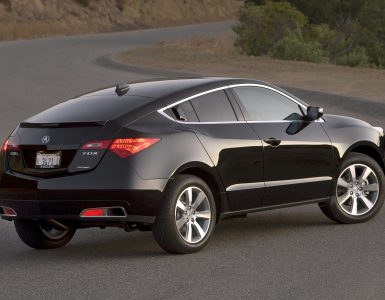When it comes to buying or selling a motorcycle, having a reliable and accurate assessment of its value is crucial. Kelley Blue Book (KBB), a trusted name in the automotive industry, is renowned for its comprehensive vehicle valuation guides. While KBB is widely recognized for its coverage of cars, trucks, and SUVs, it also provides valuable insights into motorcycle values. In this article, we delve into the intriguing world of how Kelley Blue Book determines motorcycle values.
How Kelley Blue Book Determines Motorcycle Values
1: The Foundation of Kelley Blue Book’s Motorcycle Valuation
At the heart of Kelley Blue Book’s motorcycle valuation methodology is a blend of data science, market analysis, and industry expertise. The company’s team of analysts and experts constantly monitor the motorcycle market, studying trends, transactions, and economic factors to refine their valuation process. KBB collects data from a variety of sources, including dealerships, private sales, and auctions, to build a comprehensive understanding of the market landscape.
2: Factors Influencing Motorcycle Values
Kelley Blue Book takes into account an array of factors when determining motorcycle values. These factors encompass both objective and subjective elements, ensuring a holistic and accurate valuation. Some of the key factors considered include:
- Make and Model: The brand and model of the motorcycle play a significant role in determining its value. Popular and reputable brands often hold their value better than lesser-known ones.
- Age and Mileage: Just like with automobiles, the age and mileage of a motorcycle are crucial factors. Older motorcycles with lower mileage tend to retain more value, as they are perceived as being in better condition.
- Condition: The overall condition of the motorcycle, including its mechanical state, appearance, and any modifications, is meticulously evaluated. Well-maintained motorcycles in excellent condition typically command higher values.
- Market Demand: Current market trends and demand for specific motorcycle types also influence valuation. If a particular style or model is highly sought after, its value may be higher.
- Geographic Location: Local market variations can impact motorcycle values. Regional preferences, climate, and availability can all contribute to fluctuations in pricing.
- Optional Features and Accessories: Additional features, accessories, and upgrades can enhance a motorcycle’s value. KBB assesses the value of optional components to provide a more accurate representation.
3: The Valuation Process
The intricate process of valuing motorcycles involves the synthesis of the aforementioned factors, resulting in a comprehensive valuation. Kelley Blue Book employs a proprietary algorithm that takes into account the various data points collected. This algorithm is continuously refined to adapt to changing market dynamics and trends.
- Data Collection: KBB gathers data from a multitude of sources, including dealerships, auctions, classified listings, and private sales. This data is then carefully analyzed to identify patterns and trends.
- Comparative Analysis: To determine a motorcycle’s value, KBB compares it to similar motorcycles in the market. This involves assessing vehicles with similar make, model, age, mileage, and condition.
- Adjustments: Based on the differences between the motorcycle being valued and comparable models, KBB makes adjustments. These adjustments account for variations in factors such as mileage, condition, and optional features.
- Market Trends: Kelley Blue Book keeps a finger on the pulse of market trends, analyzing consumer preferences and economic factors that can influence motorcycle values.
4: Benefits and Limitations of Kelley Blue Book’s Motorcycle Values
The utilization of Kelley Blue Book’s motorcycle values offers several benefits to both buyers and sellers:
- Transparency: KBB’s valuation process is transparent, providing buyers and sellers with insights into how values are determined. This fosters trust and confidence in the transaction.
- Standardization: KBB provides a standardized valuation system that serves as a benchmark for motorcycle values. This consistency helps buyers and sellers make informed decisions.
- Negotiation Tool: Armed with a KBB valuation, buyers and sellers can engage in negotiations with more clarity and confidence, ensuring a fair deal for both parties.
- Time Efficiency: Accessing KBB’s valuation online saves time and effort compared to traditional methods of research and appraisal.
However, it’s important to acknowledge the limitations of KBB’s motorcycle values:
- Regional Variations: Local market dynamics and regional preferences may not always align with KBB’s valuation. Prices can differ significantly based on location.
- Customizations: KBB’s algorithm might not fully account for unique customizations and modifications, potentially leading to undervaluation.
- Rarity and Uniqueness: Rare or one-of-a-kind motorcycles may not have direct comparable models, making valuation more challenging.
- Real-time Changes: Motorcycle values can change rapidly due to factors such as market trends, demand shifts, and economic changes. KBB’s valuations may not always reflect the most current market conditions.
In conclusion, Kelley Blue Book’s motorcycle valuation process is a comprehensive blend of data-driven analysis and industry expertise. By considering a wide array of factors, KBB provides buyers and sellers with a reliable benchmark for determining motorcycle values. While it offers numerous benefits, it’s essential to be mindful of its limitations and to supplement the valuation with additional research to ensure a fair and accurate transaction.





Add comment